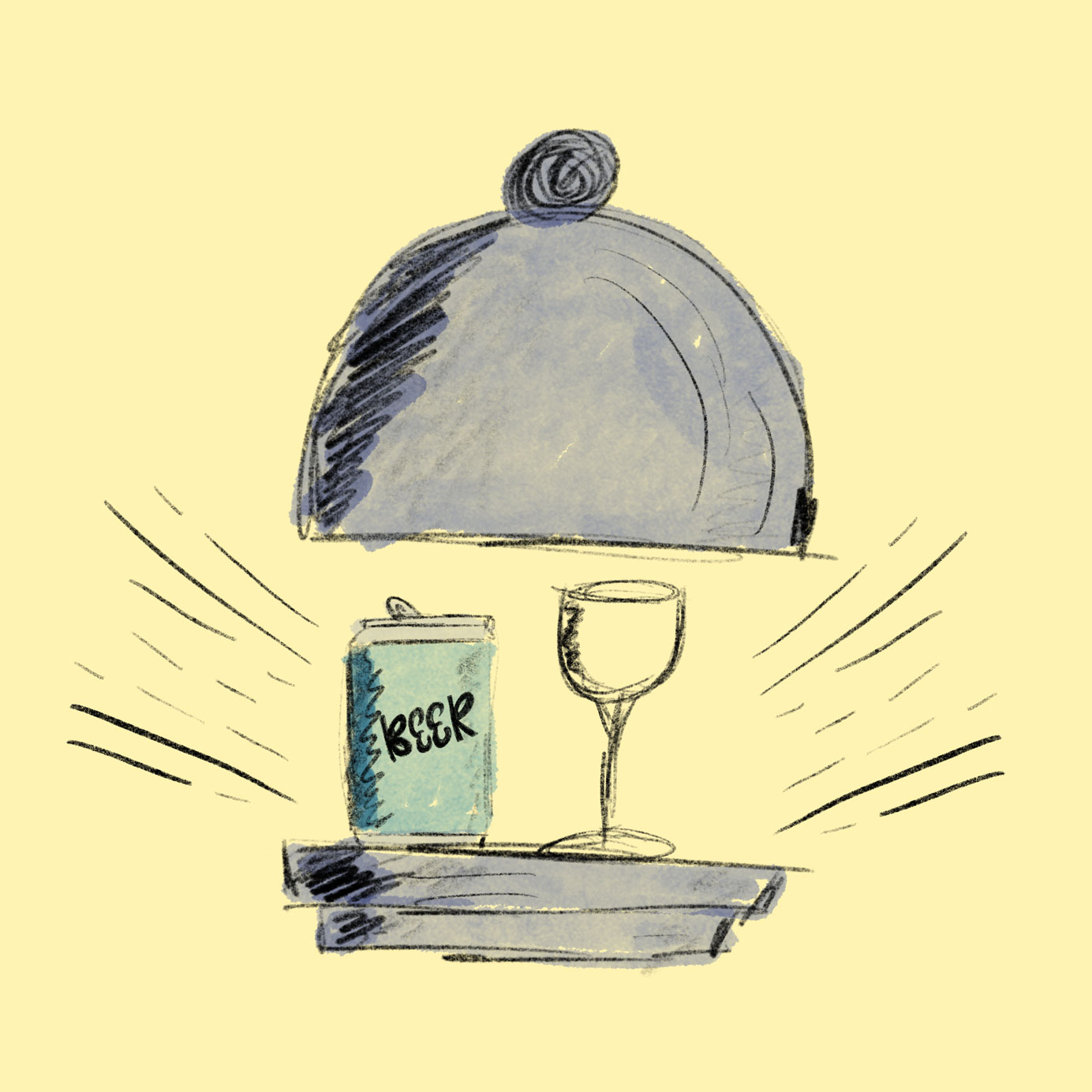In northern California’s wine country, home to such legendary breweries as Russian River, Bear Republic, and Lagunitas, vintners have a common expression: “It takes a lot of beer to make great wine.”
“I have certainly heard that a lot,” Matt Reid, winemaker at Benessere Vineyards in St. Helena, writes VinePair in an email. “I’m certain that great wine can be made without any beer consumption. That said, there is a lot of beer consumed by the production team at most wineries, whether at the winery or not. It’s probably true that at many, if not most California wineries, the majority of the production team prefers beer to wine, if they even like wine at all.”
At nearby Mad Fritz brewery, brewmaster Nile Zacherle understands both sides of the equation. He has also worked as a winemaker for many years, including a current second job making wine at David Arthur Vineyards.
“After working with grape juice all day, there’s nothing more satisfying than a cold beer,” Zacherle wrote in an email. “I’ve worked making wine in France, Australia and the U.S. for nearly 23 years, and believe me, it’s a norm, especially for us New World winemakers.”
Zacherle says he’s heard several variations of the classic “it takes a lot of beer” phrase, including one that claims that it also takes a lot of wine to make great beer. Another says that “the path to great wine is littered with beer bottles.”
What those bottles hold naturally depends on personal preferences. Reid notes that while he generally prefers to drink wine most days, his choice of beers generally includes hop-forward brews.
“I prefer IPAs year-round, and that remains the case during harvest,” Reid writes. “I like the flavor intensity of a good IPA, or even a good pale ale like Sierra Nevada. I’m a big fan of Lagunitas’s Little Sumpin’ Sumpin’, too.”
For other winemakers, the point is just to quench their thirst.
“Mostly what I drink during harvest is crisp, refreshing, Mexican beer, because it’s hot in California during August and September. Maybe a clean domestic or European pilsner,” Zeke Neeley, winemaker at Kenwood Vineyards, tells VinePair via email. Pacifico, Trauma Pils, and Pilsner Urquell are his after-work go-tos in hot weather.
“During harvest, my brain has been spending much of the day trying to focus on sensory evaluation and it needs a break. Plus, by mid-harvest I’m not that interested in having a glass of wine,” Neeley adds.
That desire to focus — or not focus — on something simple is often cited as part of beer’s appeal for vintners.
“Many drink a macro lager as well as Mexican lagers, with lime or citrus added. Most want something low-alcohol and a ‘non-thinking’ beer,” Zacherle writes. “You’ve just spent your day making so many decisions about the winemaking process that you’re exhausted from thinking, as well as the back-to-back harvest-processing days.”
As both brewer and winemaker, Zacherle says that he has brewed up special beers just for the grape harvest, including the occasional secret keg intentionally mislabeled “bacteria,” for malolactic fermentation, giving it a winery-friendly disguise. Ideally, he said, any beer should be a post-work beverage, since the heat and the hours can easily send a quick cold one straight to your head.
There’s a chance, of course, that the very idea of needing beer to make wine is outdated, and probably set to disappear completely. Many winemakers note that, while the expression remains in common use, things are definitely changing.
“There is a lot less beer stocked in winery fridges than there used to be,” Neeley writes.
Miner Family Winery winemaker Stacy Vogel believes that the industry is simply becoming more responsible.
“I’ve worked in several cellars that used to have a tapped keg available at any time, but none of them do now,” Vogel tells VinePair in an email. “The wine industry has also changed and become more responsible when it comes to alcohol. I don’t allow any of my employees to drink while on the job, except for the occasional winery luncheon.”
With nearby UC Davis turning out both winemakers and brewmasters, it makes sense that many in wine country would switch between beverages. The appeal goes both ways, too. Craft brewers are exploring wine-beer hybrids and a nascent love of grapes and must.
Despite the appeal of crisp lagers on hot days, Zacherle notes that many students and interns just starting on their wine journeys often choose IPAs and DIPAs for post-work refreshment, as well as craft lagers. His own customers, he says, frequently include local vintners, as well as tourists thirsting for something different after a day sampling the great vintages of Napa Valley.
“We see a lot of industry folks at our tap room, there to take a break, as well as folks coming to taste wines that need a break from wine,” Zacherle says. Every crush has its time and place.
